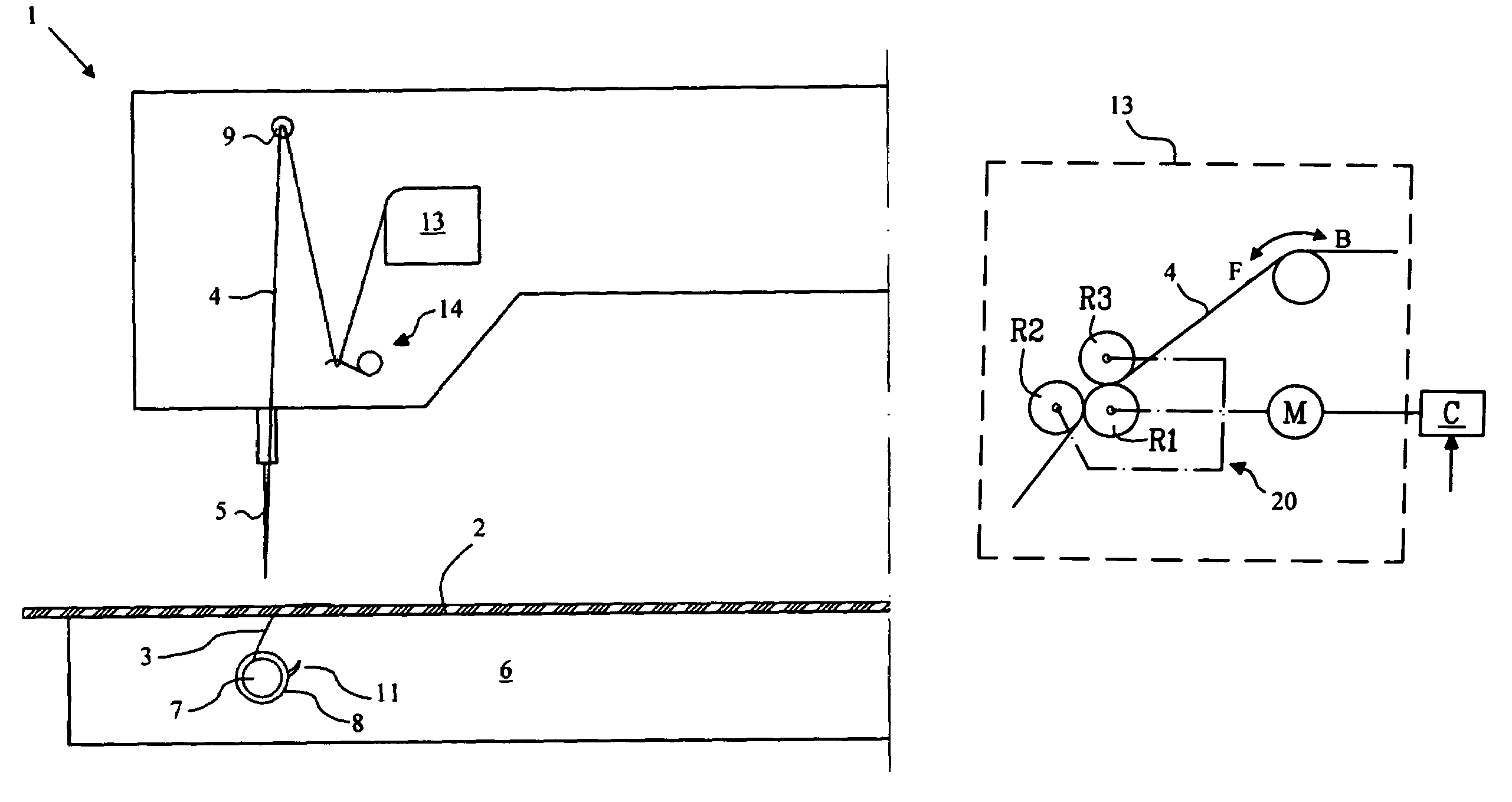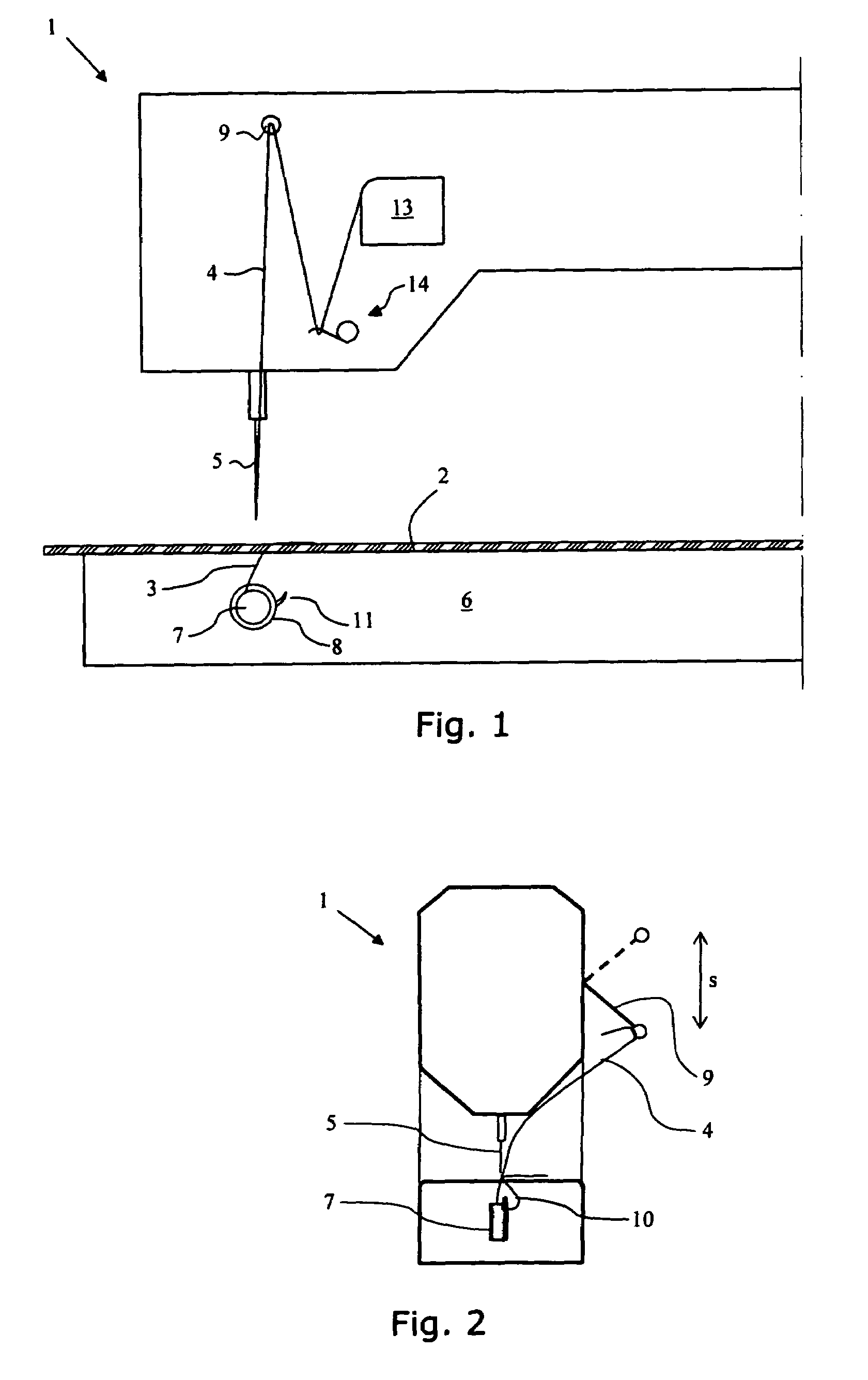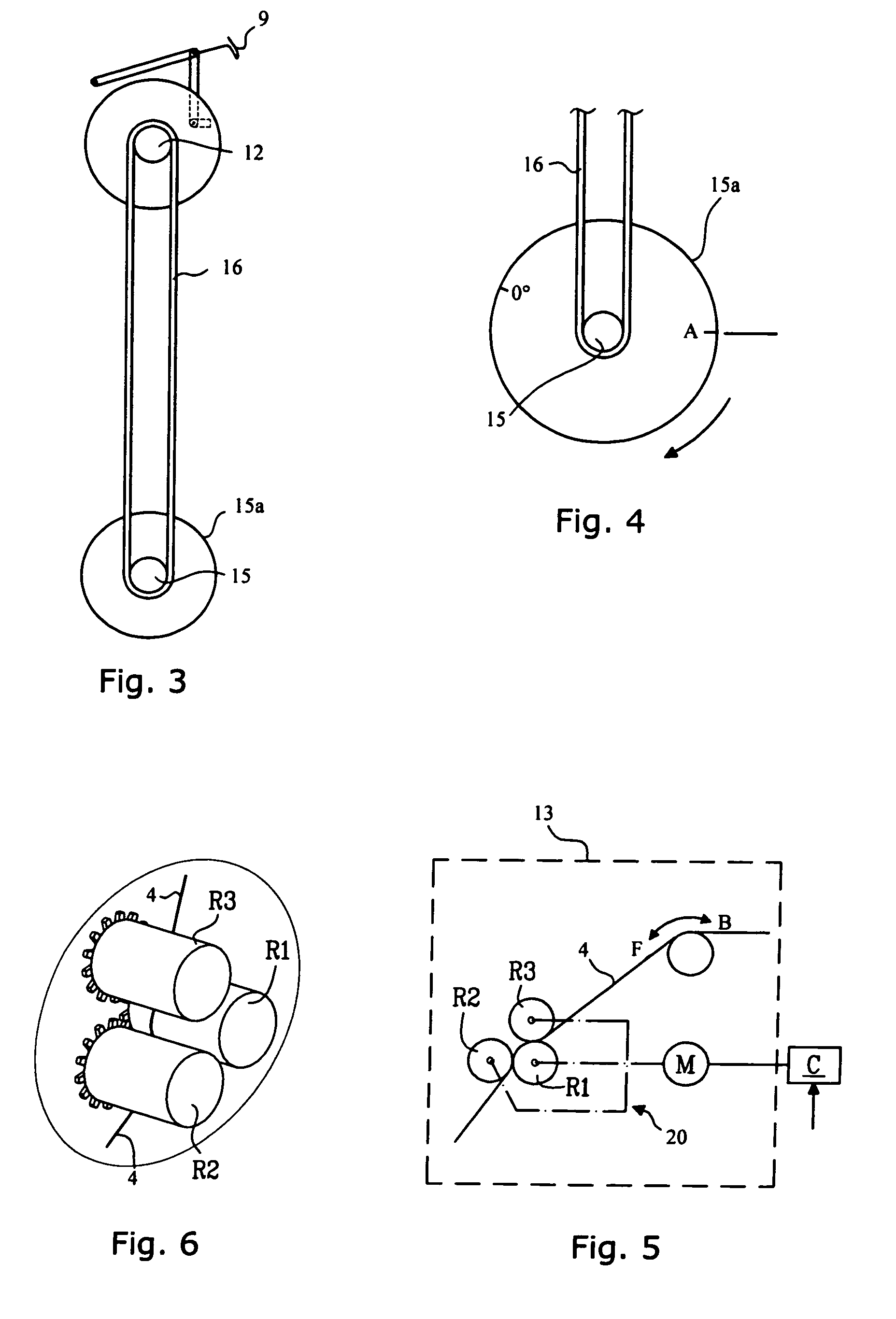Method and arrangement for a sewing machine
a sewing machine and arrangement technology, applied in the field of arrangement and a method of sewing machines, can solve the problems of increasing the maximum speed and acceleration of thread, increasing the stroke length of thread tensioning and take-up levers, time-consuming and awkward, etc., and achieves the effect of not limiting the invention, increasing the size of the lower bobbin, and not affecting the sewing work
- Summary
- Abstract
- Description
- Claims
- Application Information
AI Technical Summary
Benefits of technology
Problems solved by technology
Method used
Image
Examples
Embodiment Construction
[0013]In the prior art the entire stroke length of the thread tensioning and take-up lever is utilised in order to produce a loop in the upper thread which has a circumference large enough to allow the upper thread to be carried around lower bobbin by the shuttle. The length of the thread loop is then basically twice the stroke length of the thread tensioning and take-up lever. According to the invention both a thread tensioning and take-up lever and a thread feeder are used in order to feed the upper thread to the needle. Such an arrangement means that one is not dependent on the stroke length of the thread tensioning and take-up lever to produce the required size of the upper thread loop, which is needed in order to allow the upper thread to be carried around the lower bobbin. By means of a control element in the sewing machine, which controls the thread feeder, the required length of thread can be fed during a stitch, following which the thread length at the end of the stitch can...
PUM
 Login to View More
Login to View More Abstract
Description
Claims
Application Information
 Login to View More
Login to View More - R&D
- Intellectual Property
- Life Sciences
- Materials
- Tech Scout
- Unparalleled Data Quality
- Higher Quality Content
- 60% Fewer Hallucinations
Browse by: Latest US Patents, China's latest patents, Technical Efficacy Thesaurus, Application Domain, Technology Topic, Popular Technical Reports.
© 2025 PatSnap. All rights reserved.Legal|Privacy policy|Modern Slavery Act Transparency Statement|Sitemap|About US| Contact US: help@patsnap.com



